In Lazio, the first of May is celebrated with broad beans and pecorino cheese, one-day excursions and the historic Concertone in Piazza San Giovanni in Laterano!
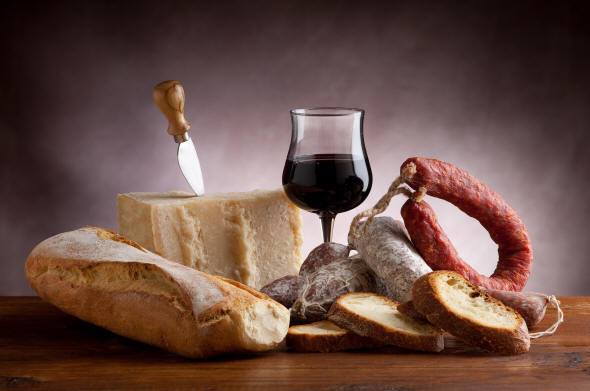
Facebook @Proloconepi
The traditional day outdoors dates back to ancient Roman times, when the arrival of Spring was welcomed with a rich menu based on the cheap combination of broad beans and pecorino cheese, accompanied by a glass of wine. In Nepi, instead, pecorino romano is served with cooked salami, especially during the eponymous festival.
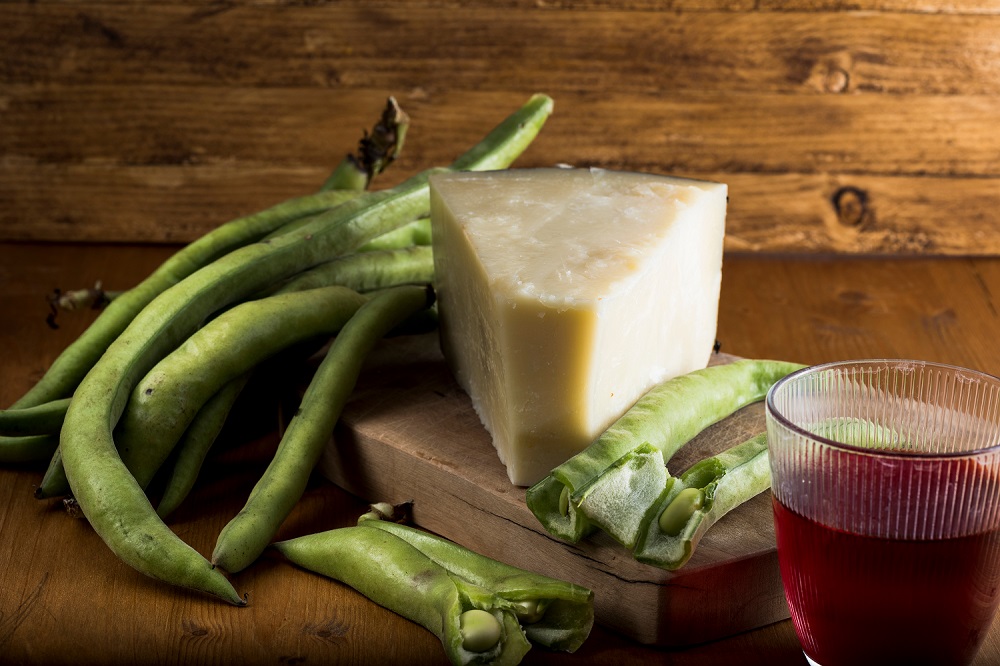
Broad beans and Pecorino Romano DOP
Broad beans already grew in the Mediterranean areas in the Neolithic. At first, the Greeks believed that the black Tau-shaped spots on their white flower symbolized the word Thanatos, and that the dead souls would have risen from the afterlife from their hollow stems.

Fave dei morti
Pythagoras describes the pod as an access to the world of the dead, and the seeds as the guardians of their souls. Hence, the traditional fave dei morti, almond biscuits consumed in Rome and central Italy on All Saints’ Day. Plato argued that broad beans deprived him of the spirituality, necessary in the search for truth. Jupiter’s priests could neither eat or touch these legumes, and the Pontifex Maximus could not even mention them. But all these superstitions were actually due to the initial habit of eating the beans together with the indigestible pods.
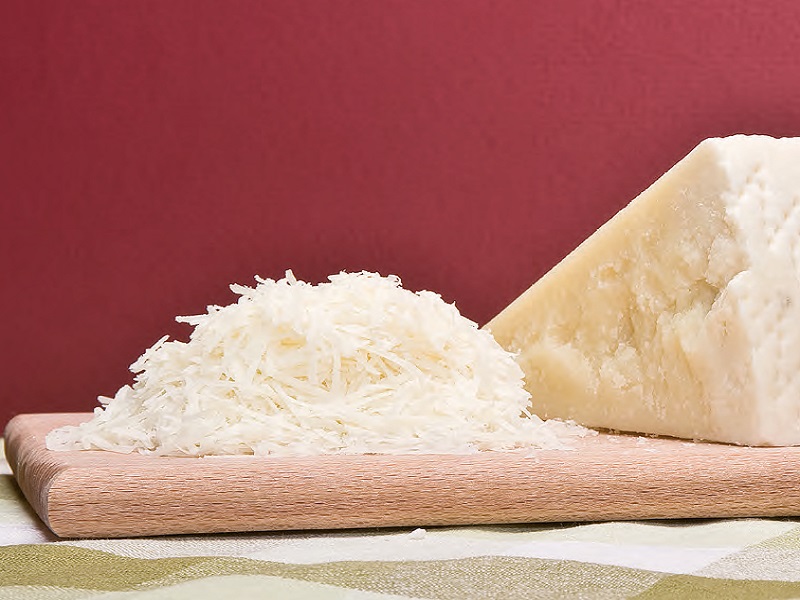
Later, due to the affinity of the pods and seeds with the male and female bodies, the legume acquired a positive regenerative connotation associated to Flora, the Goddess of Nature. Hence, the tradition of throwing the pods as a sign of good omen.
Broad beans, whose aphrodisiac power was recently confirmed, entered the Roman culinary tradition, often as a side dish to Pecorino.
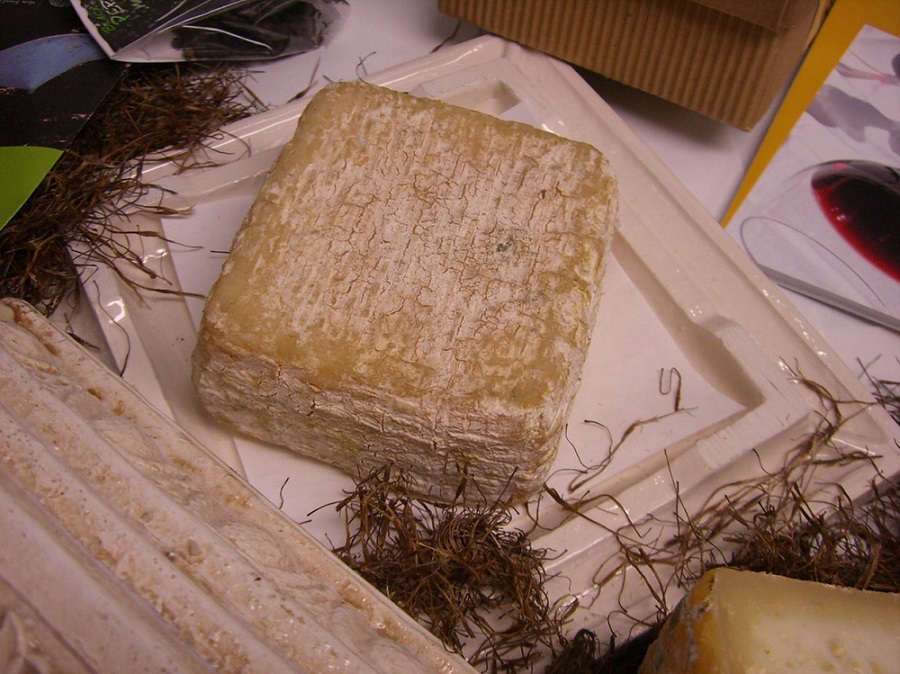
cacio fiore
In Ancient Roman times, Pliny the Elder and Hippocrates described the techniques how to produce this kind of cheese, even present in the diet of legionaries before the battles, for its easy digestibility and preservation.
Its illustrious ancestor was the Cacio Fiore, a cheese made with sheep milk and the rennet of artichokes from the local countryside. This Slow Food Presidium has been produced since 2005 in Rome, Anguillara Sabazia and Trevignano Romano.
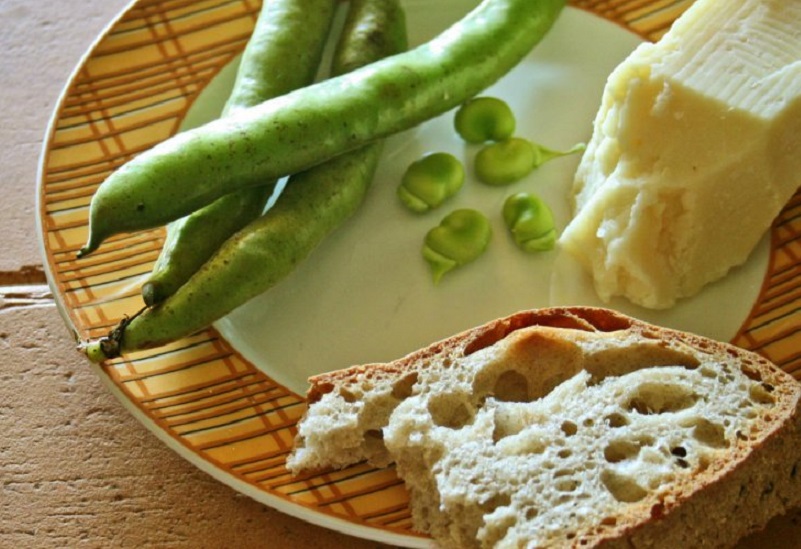
Pecorino Romano DOP, together with the tender Roman beans, is usually served at the end of a Lucullan lunch on the first of May (or Maggetto) Festival.
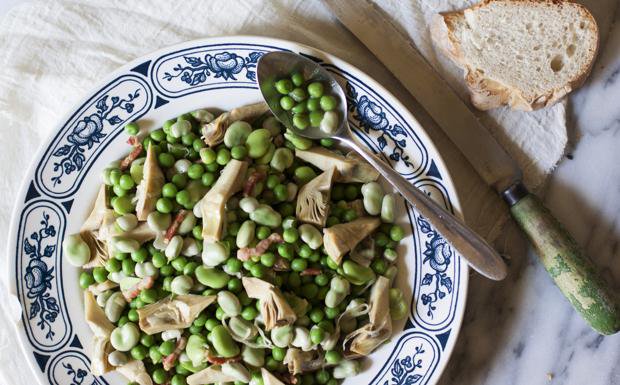
Vignarola romana
The Vignarola Romana, a seasonal side dish or main course, consists in a mix of onions, Roman artichokes, peas, broad beans, and Roman lettuce, the whole sprinkled with plenty of Pecorino Romano DOP. This speciality owes its name from the vignaroli, the farmers who enjoyed this restoring dish after a hard working day in the fields.
In Rome, the first of May is also celebrated with the “Concertone del primo Maggio” in piazza San Giovanni in Laterano, a most-attended pop-rock musical event.
